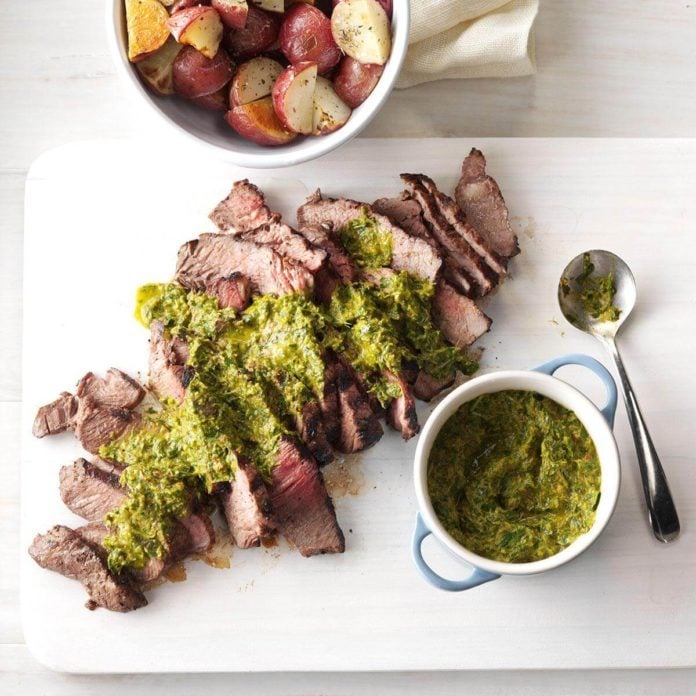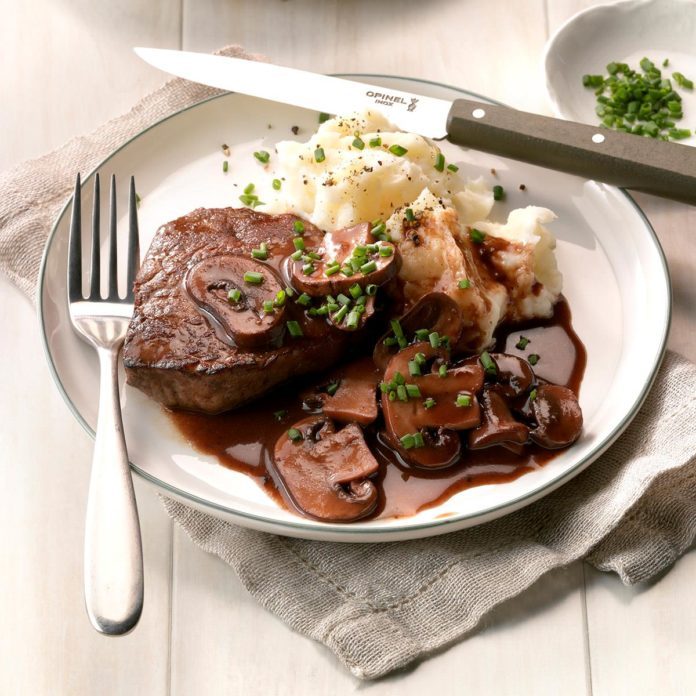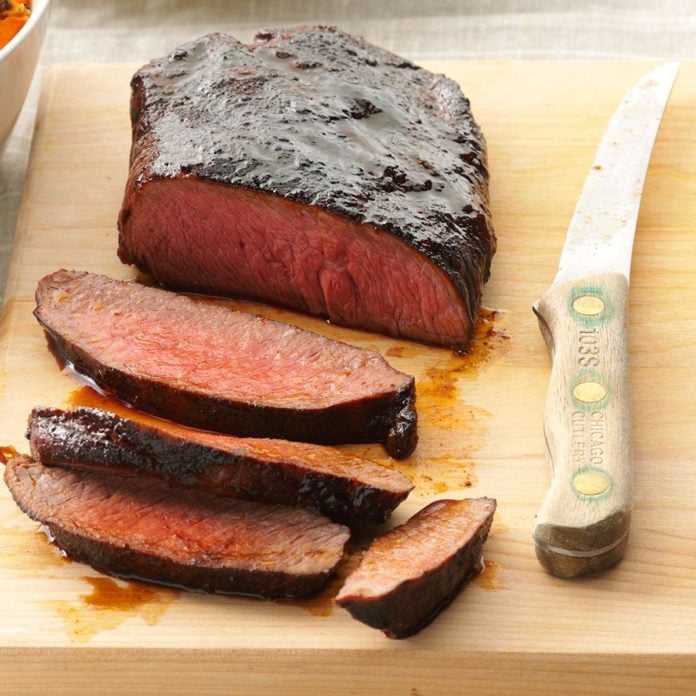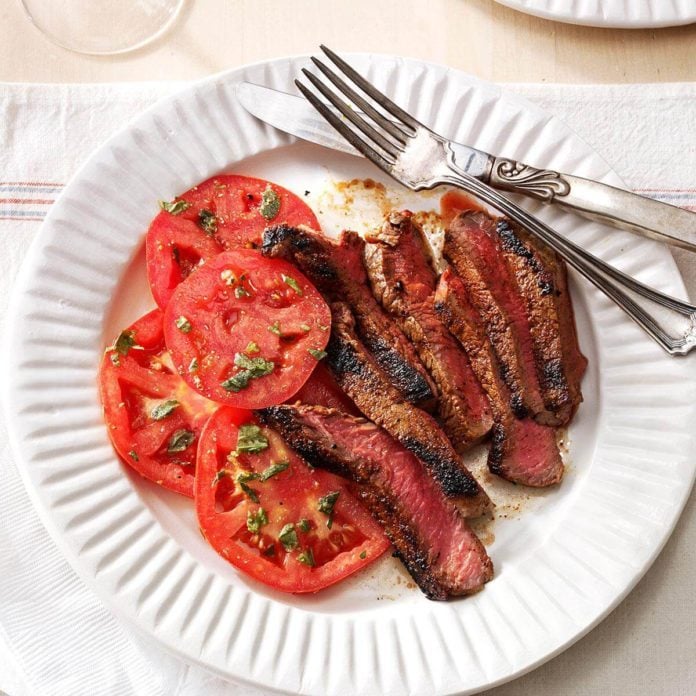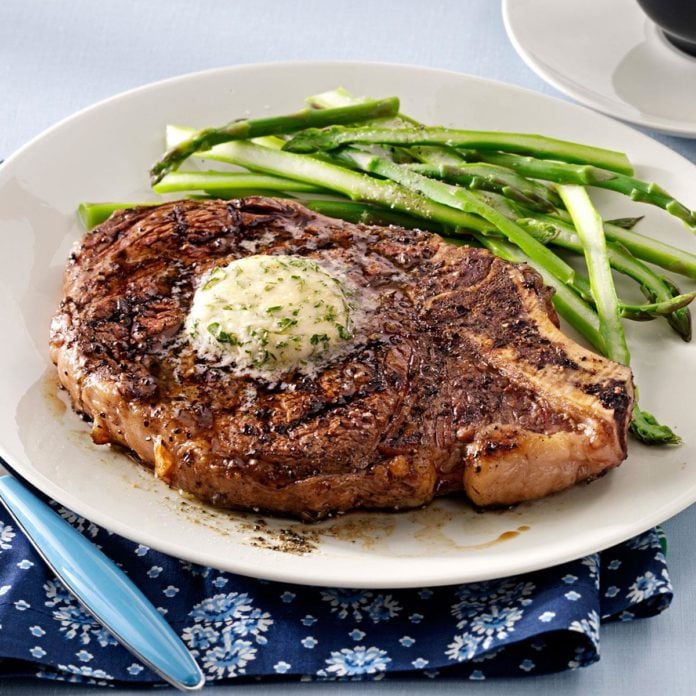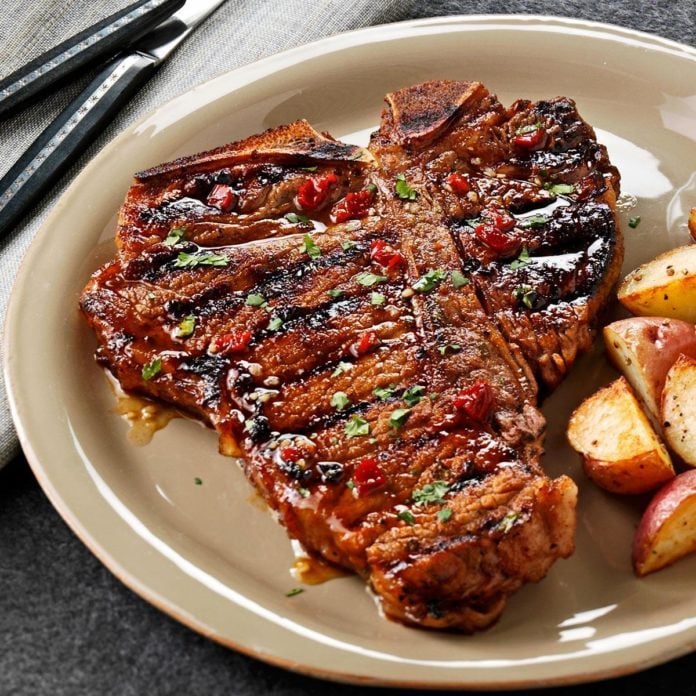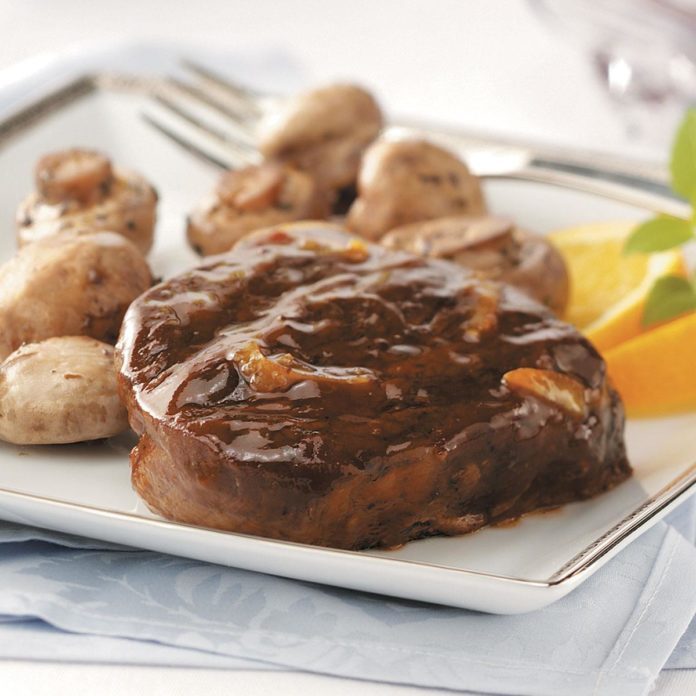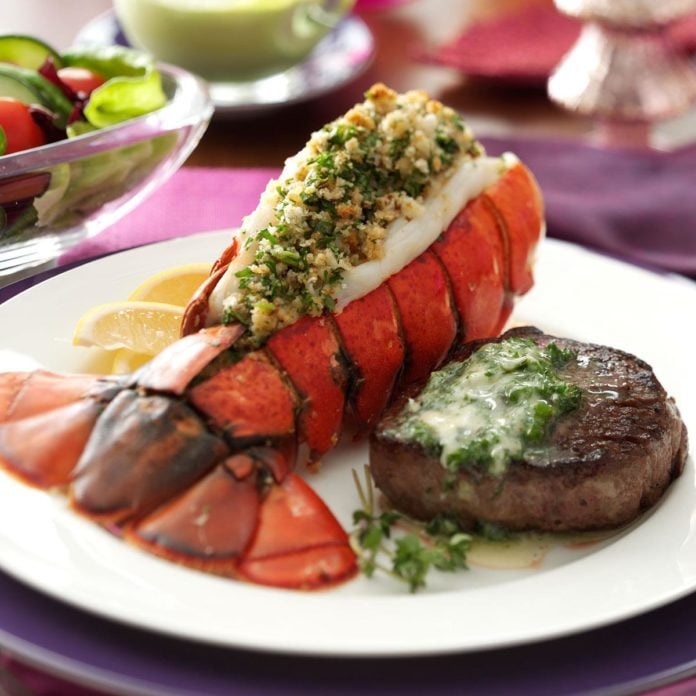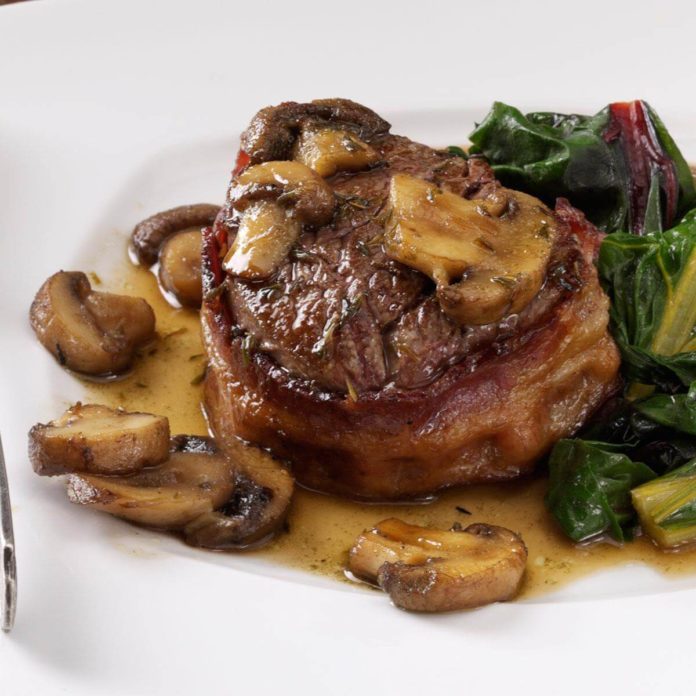There are a lot of things to consider when buying a steak: the USDA grade, bone-in or boneless, the name of the cut and the overall weight and thickness of the steak itself. It can be overwhelming!
As a former restaurant chef, I’ve spent a lot of time weighing price to value when it comes to steak. While I might serve a high-end steak like ribeye or filet mignon in a restaurant, that’s not necessarily the cut I choose when I’m cooking dinner.
What’s the best steak to buy for your budget? How do you navigate all those choices? Keep these insider tips in mind as you’re browsing the meat counter. Don’t be afraid to ask your butcher for suggestions, either; they know the best cuts of meat you should ask for.
Know the Meaning of Prime, Choice and Select
Most beef has a quality grade stamped on the package—Prime, Choice or Select. These ratings are chosen by the United States Department of Agriculture (USDA) based on a variety of factors, including the age of the cattle, the uniformity of the meat and the quantity of marbling.
In the end, the grade gives you a good idea of the overall tenderness, juiciness and flavor of a steak.
Prime cuts have the most marbling and they’re produced from young beef cattle. They’re also the most expensive and only account for about 2& of all beef graded by the USDA. If you have the money to spend, these steaks are the highest quality.
Next up are Choice cuts, which are still quality beef but they have less marbling than Prime steaks. Because they have less fat, they can become dry if they’re overcooked. Buying a Choice steak is my go-to option at home. So long as you avoid these common steak mistakes, Choice beef tastes fantastic and it doesn’t break the bank.
Finally, Select beef has the least amount of marbling, making it the leanest option. It can lack the juiciness of the higher grades, so you should marinate Select beef before cooking it. It’s not always best for dry heat cooking methods (like grilling or roasting), but it’s a great option for braised dishes.
If you don’t see any of these labels on your steak, it likely comes from ungraded beef. This is most common for ground beef, but you’ll also see it on store brand meat. It’s not necessarily bad, but you may want to give these steaks a good marinade, cook them low and slow and serve up a killer sauce, just in case.
Use All of Your Senses
If your cattle wasn’t processed in a USDA facility, it won’t have any of these gradings. You’ll have to rely on your eye and a butcher you trust to know what’s what. When you’re peering at rows of beef in the case, think like a chef:
- Color: Beef should have a bright, cherry red color. Gray beef isn’t necessarily bad, but it does mean that your meat was starved of oxygen in the display case. A rainbow-like or greenish sheen also don’t indicate decreased quality, but it happens when meat is exposed to too much light or heat during processing. Avoid steaks that are dark brown and look dry or crusty.
- Marbling: Fat is flavor, so a large amount of intramuscular fat is a sign your beef will taste great! Look for creamy white fat. If it has a yellowish tint, steer clear; it indicates the meat may be from an older animal.
- Aroma: Fresh beef shouldn’t have a strong aroma of any kind. It may smell slightly iron-forward, but like fish, it should smell clean. Any beef that smells sour or sweet is on its way to spoiling. In general, anytime you feel like something smells “off,” it’s better to be safe than sorry. Toss it and move on.
- Texture: You usually don’t get the chance to handle meat before your purchase, so it may be too late by the time you assess the texture. But, if your steak has a sticky feel or it’s slimy, it’s past its prime.
- Packaging: Look for packages without holes or tears, which can indicate improper handling or storage. You also want to avoid any packaging that has ballooned up with air or has excess liquid inside.
- Sell-By Date: When in doubt, always check the sell-by date. Beef is generally good for a day or two past this date, but it’s best not to push it—plan to sear up those steaks today.
Look for the Right Cut of Steak
This is a highly subjective topic, but it’s generally agreed that the tenderloin (or, filet mignon) is the most tender cut of steak. That being said, it’s not my personal favorite. Because it’s super lean, it can dry out if you’re not careful!
When you’re going all out, we recommend picking up a Prime ribeye or New York strip. They’re the easiest steaks to cook because of their high levels of marbling, which build in a lot of forgiveness in case you accidentally overcook them.
Any 1-inch-thick steaks cut from the short loin (like T-bone or porterhouse) or sirloin (top sirloin or tri-tip) are also fantastic choices for the grill when you’re on a budget. Thinner steaks from the plate (skirt or flank steak) tend to be tough but have a beefy flavor, and they grill up just fine if you marinate them.
I wouldn’t recommend grilling steaks that come from the chuck, briske, or round. These tougher cuts are inexpensive, but they’re better suited for low-and-slow cooking methods.
Steak with Chipotle-Lime Chimichurri
Beef Filets with Portobello Sauce
Flank Steak with Cilantro & Blue Cheese Butter
Grilled Onion & Skirt Steak Tacos
Beef and Blue Cheese Penne with Pesto
Garlic Grilled Steaks
Flank Steak with Couscous
Summer Steak Kabobs
Stuffed Flank Steak
Tenderloin with Horseradish Cream Cheese
Beef Tenderloin in Mushroom Sauce
Teriyaki Steak Skewers
Southwest Steak & Potatoes
Maple & Blue Cheese Steak
Grilled Steaks with Greek Relish
Flank Steak with Cilantro Salsa Verde
Smoky Espresso Steak
Grilled Steaks with Marinated Tomatoes
Balsamic-Seasoned Steak
Tenderloin Steak Diane
Blue Cheese Flat Iron Steak
Chili-Rubbed Steak & Bread Salad
Grilled Ribeyes with Herb Butter
Tenderloin Steaks with Cherry Sauce
Blue Cheese-Crusted Sirloin Steaks
Chipotle-Honey Grilled T-Bones
Glazed Beef Tournedos
Peppered Filets with Horseradish Cream Sauce
Steak au Poivre for 2
Steak Diane
Grilled Steak Pinwheels
Easy Marinated Flank Steak
Surf & Turf
Saucy Skillet Steaks
Bacon-Wrapped Filets with Scotched Mushrooms
Merlot Filet Mignon
Chocolate-Chipotle Sirloin Steak
Steak with Citrus Salsa
Skillet Steak Supper
The post One Chef’s Secrets for Buying the Perfect Steak appeared first on Taste of Home.
Lindsay D. Mattison
